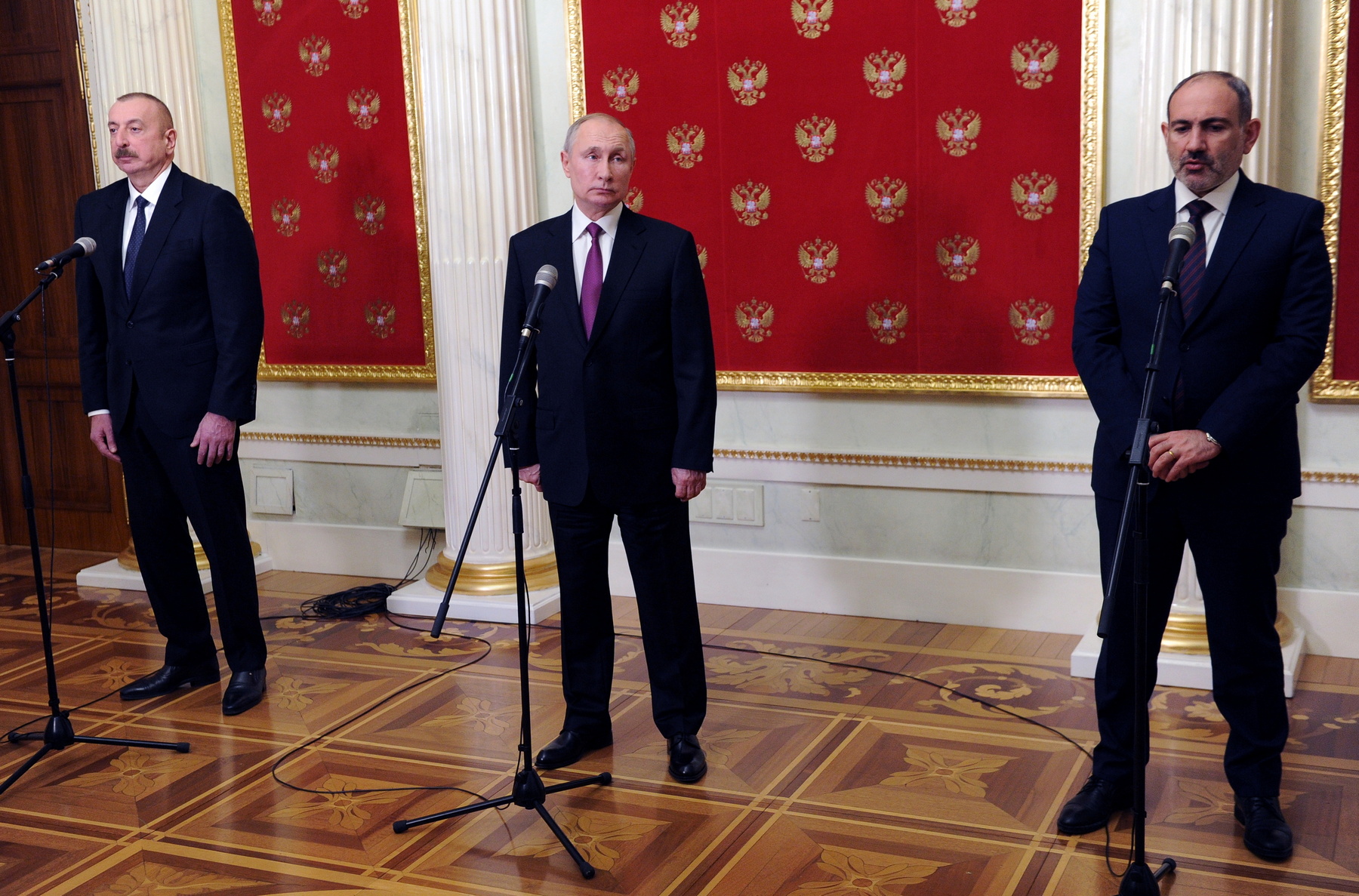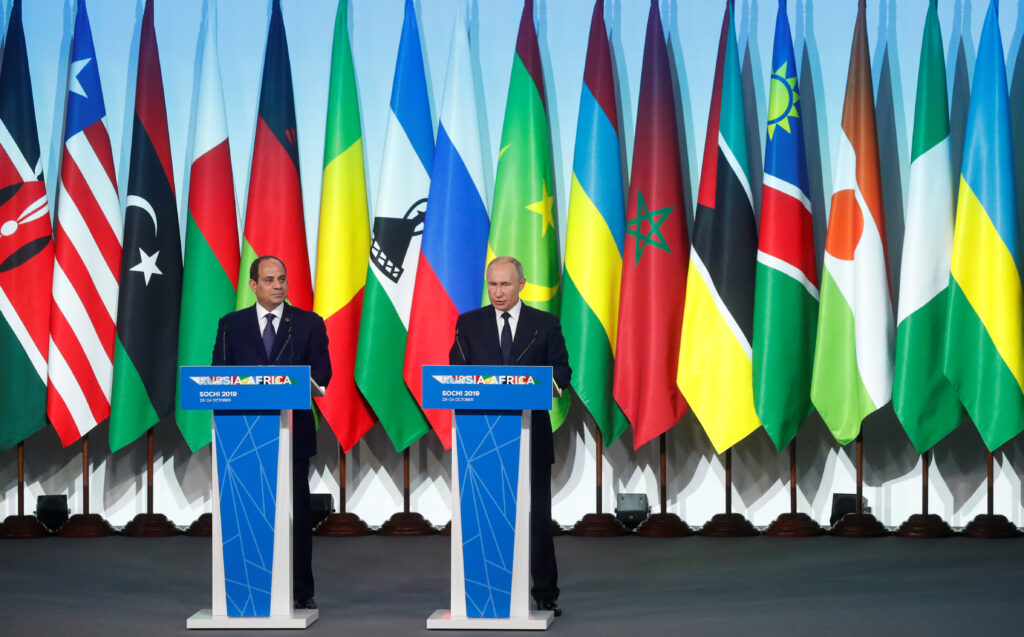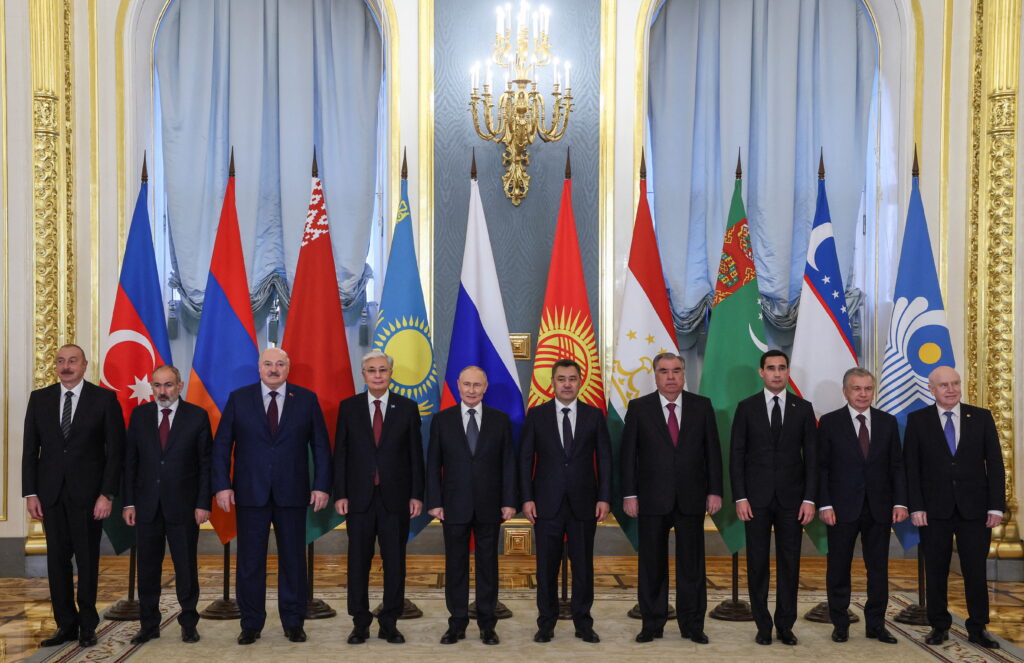On November 9 a year ago, the war between Azerbaijan and Armenia in Nagorno Karabakh came to a halt with the deployment of Russian peacekeepers to the area. In the twelve months since, however, there has been scant sign of a lasting political solution. Neither side has been willing to entertain serious top-level negotiations, even when pressured by major regional powers. Just this month, a much-awaited meeting of both sides in Moscow was cancelled. Then, on November 16, another bloody skirmish on the border saw at least 13 people killed. Fighting of such intensity can be safely called a resumption of hostilities, even if for one day. So that at least prompter a meeting in Brussels for December. This prompted the idea of a summit in Russia to rise from the ashes again — scheduled now for November 26 in Sochi.
At the same time, for both Yerevan and Baku, these negotiations are more a tribute to the international community than something for themselves. Azerbaijan is rightly convinced that it could solve all problems with Armenia by force — if Russia and the West did not interfere. Armenia, meanwhile, feels like a prisoner awaiting a death sentence. This means that the only chance to prolong your days is to delay the trial and hope for a miracle.
The parties proceeded from the same logic before the war in the fall of 2020. Baku threatened Yerevan with an “iron fist” – as they call their army, equipped as it is with Turkish and Israeli weapons. And Yerevan argued that a phased solution to the Karabakh conflict does not suit. Instead, the Armenians want something more multi-faceted. Simplistically, this model can be described as follows: the Azerbaijanis give a guarantee in advance not to claim the populated part of Karabakh (Stepanakert, Shusha, Khojaly, Martuni, Martakert, Hadrut). The Armenians, in response, withdraw their troops from the regions that made up the “security belt” of mined ruins of cities and villages where Azerbaijanis lived before. But these Armenian aspirations were never fulfilled, as Baku was unhappy with such a scenario.
All talk about the peaceful coexistence of the two peoples in Karabakh and “cultural autonomy” turned out to be untenable. If you tell the residents of Stepanakert or Martuni, who, thanks to Russian intervention, remained under the control of the Armenians, that they will soon have to live under the flag of Azerbaijan, their reaction will not be friendly. If you tell a Baku resident that he will have to share the country with the Armenians, he will most likely say: “No problem – if they receive Azerbaijani citizenship and abandon the ideas of separatism. And he who does not want it – let him leave”.
All the hopelessness of the situation is hidden in these words: Armenians are not ready to abandon Karabakh nor to integrate into Azerbaijan. And Baku does not offer other, softer options. Of course, militant rhetoric often turns out to be ostentatious. In fact, more and more Armenians are leaving Stepanakert for a place of more stability and ways to earn money. But this does not mean a decrease in hatred for each other.
The societies of both countries are not ready for a peaceful life. To fix this, it will take decades of painstaking work, like psychotherapy en masse. Of course, this psychotherapy will not do without the question: “Maybe we are also to blame for something?” But the very question has so far evoked rejection on both sides.
Whatever the outcome of the talks on November 26, the settlement of the Armenian-Azerbaijani conflict is at the stage “the parties can see each other at a distance of several meters and not shoot.” And this is already quite a lot. The young people of both countries, for whom the USSR never existed, are used to communicating with each other with rabid obscenity, if only via social networks.
The only thing that changed the war was the positions of the parties. If earlier the Azerbaijani troops were stationed in the Horadiz region, now they are already on the border of Armenia itself. They even have the opportunity to block the route connecting Yerevan with the southern city of Kapan. Since this road was built back in Soviet times, no one even thought that in two places it literally enters the territory of Azerbaijan for several hundred meters.
Thus, the Karabakh issue seems to have receded into the background. The main topic and the main point of tension now is the Syunik region. This is about 150 kilometers of the border. A year ago, that separated some Armenians from others, and now separates Armenians from Azerbaijanis.
Limited delimitation
Taking into account the above, the primary task today seems to be the delimitation and demarcation of the border. First of all in the Syunik region of Armenia, and then in the north of the country, where skirmishes have also become commonplace.
However, this logical action runs into several obstacles. First, to launch the delimitation process itself, Baku requires Yerevan to recognize its territorial integrity. That is, to abandon the remnants of Karabakh, where the Armenian administration remains. Second, Baku insists that a transport corridor connecting the main part of the country with the Nakhichevan exlav should be laid through the Syunik region as soon as possible.
Sooner or later, such a route must be laid. This is required by the trilateral agreement between Aliyev, Pashinyan and Putin, signed on November 9, 2020. But here, every detail requires discussion: will this road be allocated specifically for Azerbaijanis? Or will Armenians also be able to travel along it from west to east? How much will the transit of goods cost? What exactly is meant by the wording: “control over transport communication is carried out by the bodies of the Border Guard Service of the FSB of Russia”? Does it mean that Russian border guards will simply register entry and exit from Armenia? Or will they escort Azeri convoys along the entire route? An accident on the way can happen, which could immediately escalates into a national conflict; just an attack by teenagers with stones could spark a response. So precautions here should be taken seriously.
Finally, along the road from Baku to Nakhichevan (the Azerbaijanis call it the Zangezur Corridor, and the Syunik region itself – its historical region Zangezur), the agreement promises to unblock other transport routes – between Armenian Gyumri and Turkish Kars, between Armenian Ijevan and Azerbaijani Gazakh. This would allow Armenia to send goods to Russia not through Georgia with its mountain serpentines, which are closed with every snowfall, but by rail through Azerbaijan. But people in Baku do not like to be reminded of this, trying to first get what they need.
The opinion of Armenia’s society on these processes is well characterized by a November 24 incident in the Yerevan metro. Activists of the opposition organization “Liberation Movement” blocked the movement of trains at one of the stations, protesting against the “Zangezur Corridor” and against the delimitation of the border.
The reasons for such experiences the night before were given by Nikol Pashinyan himself. He was trying, on the contrary, to dispel fear. Answering questions from journalists online, he said there is no ready-made document on delimitation and demarcation that can be signed in Sochi. What they really can sign is only a document on the creation of a delimitation and demarcation commission.
On other issues, Pashinyan spoke out no less harshly than before. “Azerbaijan by its actions shows that Baku has territorial claims to Armenia. What does the Zangezur Corridor or East Zangezur mean? Who comes up with these terms? We have stated and continue to declare – we will not discuss issues in this corridor logic” – he said about the road through Syunik. And on Karabakh, the Armenian prime minister said a completely radical thing. Namely, that the conflict around it has not a territorial but a legal nature, while Armenia recognized the territorial integrity of Azerbaijan back in 1991, when both countries joined the CIS.
Meanwhile, Nikol Pashinyan has repeatedly mentioned a certain “proposal of the Russian Ministry of Defense” on the delimitation of the Armenian-Azerbaijani border, which suits Yerevan. What exactly it implies is anyone’s guess. But to interest the negotiators, there must be some kind of beneficial compromise.
As Pashinyan said at the last press conference that his view on acceptability does not “one hundred percent coincide with our ideas since Azerbaijan will not agree in this case. We previously proposed a mirror withdrawal of troops. Russia is trying to deduce the average of our proposals and those of Azerbaijan”.
In turn, Russian Deputy Prime Minister Aleksey Overchuk, who is a member of the trilateral commission on unblocking transport communications, flew to Baku the next day. Considering the Kremlin declared this topic as the main one at the Sochi meeting, a possible compromise could be afoot.
Russia’s position on the Zangezur corridor is rather pro-Armenian. The Foreign Ministry stated that “all unblocked and newly created transport routes will function on the basis of respect for the sovereignty and territorial integrity of the states through whose territory they pass”. Therefore, most likely Moscow will try to convince Baku to soften its rhetoric on this issue, which will make the project itself more realizable. In other words, the sooner Azerbaijani officials give up the word “corridor”, the sooner a land route will connect from Baku and Nakhichevan. But so far, things are not heading that way. A few days ago, a photo taken from the cockpit of a Baku-Nakhichevan aircraft appeared on the social networks of the Azerbaijani airline AZAL. Judging by the signature, it was made over Lake “Goycha”, which the Armenians call Sevan, and in the distance you can see Mount “Agra” – Ararat. Yerevan understands such hints unequivocally. If the Azerbaijanis are allowed to pave the road, they will also demand the territory around it. Moreover, even in Soviet times, the population of Syunik was mixed. Before the arrival of the Bolsheviks, the independent Armenian and Azerbaijan Republics (both existed for about a year) were waging a war over this region.
As for the delimitation, it really can be separated from the issue of recognizing Karabakh as a part of Azerbaijan, as Yerevan wants. If this seems too radical for Baku, then there is another option. It could conduct it in a smaller aresa, without touching those that adjoin directly to the Lachin corridor. Armenia’s claims to the Zangelan and Kelbajar regions, for instance, were withdrawn last year. The Armenians lost one of them during the fighting, the other was left voluntarily, as required by the agreement.
Even a little progress on this issue is very important for Moscow. Indeed, in just two weeks, Aliyev and Pashinyan will have a chance to meet in Brussels. So far, the Armenian prime minister claims that the European meeting will be devoted to humanitarian issues like the release of prisoners. But if there is a complete failure in Moscow, the European Union may still try to have its say on other issues as well. Such a confrontation between the peace negotiation formats would be very undesirable. Until now, the Armenian-Azerbaijani conflict has been unique precisely because Russia, the European Union and even the United States share a common opinion on it and even cooperate within the framework of the OSCE Minsk Group.










